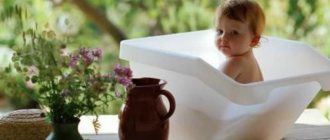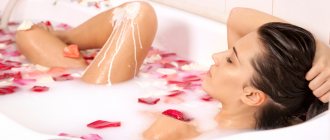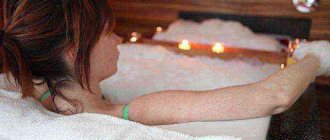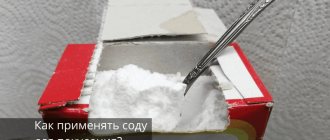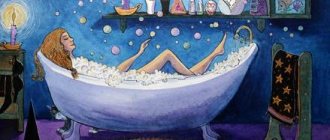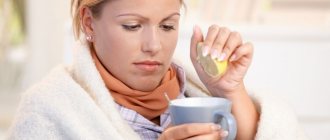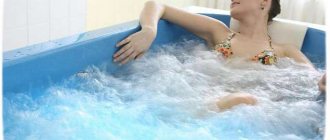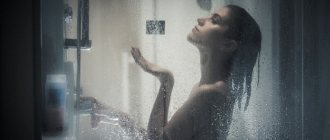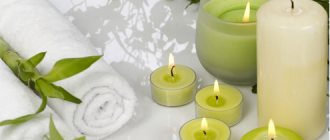28.01.2017
In the initial stage of onychomycosis (nail fungus), medicinal baths help well. Onychomycosis is a highly contagious disease that can be caught in a pool, bathhouse, trying on shoes in a store, or walking barefoot on the beach.
The fungus gets on the skin of the foot and then spreads to the nails. If the disease is not treated, it develops, reducing immunity, destroying nails.
While taking ointments and creams prescribed by your doctor, you can use foot baths for fungus, affecting the infection comprehensively. Traditional medicine recipes contain many effective remedies in which you can steam your feet.
These are herbal decoctions with anti-inflammatory, bactericidal and antiseptic effects, as well as simple remedies - soda, apple cider vinegar and iodine. Steam your feet only after the doctor approves such a procedure against the background of the prescribed course of therapy.
Beneficial properties of the sea salt procedure
Foot baths are included in all folk recipes intended to combat swelling. Sea salt is one of the most popular ingredients in them. Such procedures are also recommended by doctors who prescribe treatment for diseases that cause swelling, as well as cosmetologists.
The beneficial properties of baths with sea salt solutions are due to the rich mineral content. This product contains a lot of iodine, calcium, phosphorus, manganese, and iron. All these microelements are necessary for the processes of exchange, synthesis, regeneration, and cleansing. The procedure provides several beneficial effects. Thanks to a sea salt bath:
- pain and swelling are relieved;
- muscle spasms are eliminated;
- blood circulation is activated;
- metabolism is normalized;
- strengthens bone tissue and nail plates;
- the skin is moisturized and becomes more elastic;
- the risk of developing fungal infections is reduced;
- the skin is cleansed of keratinized layers of epithelium.
In addition, the intake of iodine and iron helps strengthen the body's natural defense system.
Herbal infusions for bathing
Herbal baths are very beneficial for the human body. Few people know that an ordinary leaf of a plant or its stem can bring a significant positive effect and relieve many diseases. Everyone knows, for example, that warm water filled with a bath will help quickly restore healthy sleep, but cold water will give you vigor and help you get ready for the work day. Parents often force children to take these types of baths so that the body is hardened and the immune system is not predisposed to diseases. There are relaxing, healing baths that act on the cardiac system, promote increased work of the stomach and intestines, have a beneficial effect on the liver and lungs, are tonic and liberating. You can learn about all these types from this article dedicated to herbal baths.
Water can not only rid human skin of dirt, but help maintain its youth, beauty and health. Water, as a life-giving force, gives energy and can tone you up after a hard day at work, a long trip or a bad mood. If we touch on the question of how the skin is enriched with these nutrients and vitamins, it is worth noting that the epidermis is very thin and is capable of allowing air to pass through, so that water particles supplied with microelements easily get inside.
Water temperature is of great importance. Hot and cold baths should be used in rare cases and should last no more than 7-10 minutes. But the best option for adults and children would be a bath filled with warm water. Here you can lie down and dream for 20-30 minutes. A cold bath, however, gives a positive result, as it is used to strengthen the immune system and youthful, elastic skin. But a hot bath, for example, is taken by those who suffer from colds and prolonged cough.
Every person has taken a bath with sea salt at least once in their life. Why is it so useful and is it considered a real source, a cradle of vitamins? It turns out that if you use sea salt every time you take a bath, you can relax, remove negative thoughts and get ready to pass the exam, you can quickly return to healthy sleep and affect the functioning of hormones and the general metabolic process in the body of both men and women. In addition to sea salt, essential oils are also actively used. Most often, a few drops are dissolved in a glass of kefir and then added to the bathroom, where the water temperature is 38 degrees. For example, a bath containing a mixture of essential oils such as lemon, thyme and rosemary can relax a person, adjust a woman’s hormonal levels, and prepare a man for hard and painstaking work.
Herbal infusions are an indispensable attribute for true bath connoisseurs. Before taking a bath with herbs, you should wash your body with soapy water, and then avoid soap completely, even after the bathing procedure is over. You must completely immerse yourself in the natural source of vigor, beauty, health and youth, only then can you get an accurate, positive effect. In beauty salons you can rarely pamper yourself with such baths, since such procedures will require a lot of money. Although the most standard herbal preparations will be used. It is best to buy them in advance at the pharmacy or stock up yourself according to the season. Herbal infusions should be used as follows: approximately 100 g of dry herb and 500 g of raw herb. Parts of the plants need to be placed in cold water and boiled, then strained, poured into the bathtub and added as much water as you need. After this, you can directly begin the procedure itself and gradually receive the healing effect from collecting plants. Now let's look at the most popular and proven herbal baths. Chamomile 4 parts and sea buckthorn 5 parts, birch leaves 5 parts. This mixture should be used to relax and cleanse the skin of impurities. It helps to relax the feet and eliminate the causes of heel spurs. A herbal mixture of fir and spruce needles will help quickly enrich the body with essential vitamins, fill it with strength and allow you to quickly fall asleep within 15 minutes after the bath. Lavender has a similar effect. Children are encouraged to take lavender baths to help calm them before bed.
A herbal mixture consisting of oregano, yarrow, and wormwood will help cleanse the body of abrasions, quickly heal bruises and wounds, eliminate acne and pimples that make it difficult to wear open clothes for fear that someone will notice this “attraction.” A mixture of pine buds and mint gives an excellent effect of rejuvenating and softening the skin. It is enough to combine the components, add cold water, put on fire, and at the end of 20 minutes, add the resulting broth to the bath. Thus, you can quickly and cheaply get the effect of baby skin if you have already lost hope of returning your youth and beauty. For dry skin, this mixture of plants will be useful: rose hips, lavender and jasmine. For oily skin, chamomile, calendula, thyme and plantain are suitable. To restore strength after illness or a working day, you need to use mint, thyme, calamus or chamomile. This will quickly restore lost strength and help you get ready for sleep.
Effective recipes for baths
Not only sea salt helps in eliminating puffiness. Traditional medicine offers a number of effective ways to combat this pathology.
Massage and air baths
You need to remove shoes and socks from tired, swollen feet and ensure unhindered access to air. For a quarter of an hour, do a massage, including rubbing, kneading, stroking, bending and straightening the feet. Then you should rest quietly, lie down with your feet on the cushion. The procedure ends with washing your feet with cool water and applying a moisturizer.
Herbal baths
Decoctions of medicinal herbs can be added to solutions with sea salt to increase the effectiveness of combating swelling. Crushed calendula, chamomile, mint, sage, nettle are mixed in equal quantities. For a liter of water you need 2 tablespoons of the mixture. The boiling liquid is poured into a container with herbs and infused for 20-25 minutes. The infusion can be cooled to a comfortable temperature or diluted with cold water. Keep your feet in the bath for 15-20 minutes.
Salt bath with soda and juniper
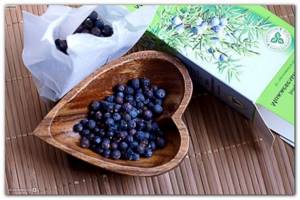
To prepare the medicinal solution, use 2 tsp. soda, 2 tbsp. sea salt, 100 g juniper berries. They are poured into a container and filled with a liter of boiling water. After the product has cooled to an acceptable temperature, you need to steam your feet in it for 20-30 minutes. Then dry your feet, put on socks or wrap them up. The procedure not only relieves swelling, but also improves the structure of the skin of the feet.
A bath can also have additional positive effects. Depending on the type of problems present, additional ingredients are added to the treatment solution:
- Softening corns, calluses, disinfecting laundry soap.
- Eliminating mycosis iodine.
- Celandine, which relaxes muscle tissue and reduces tension.
For colds, the best additional ingredient is mustard.
Sea salt treatments
A significant advantage of salt procedures is that they can be carried out daily without harm to health. A bath with sea salt provides high-quality disinfection, eliminates inflammation, relaxes muscles, and removes swelling associated with wearing uncomfortable shoes. To prepare the solution, pour a tablespoon of the product into a liter of boiling water. The solution is diluted with cool water to the desired temperature.
Recipes for baths from medicinal herbs and plants.
- Bath with mint or lemon balm.
Melissa is a soothing herb. Taking a herbal bath with lemon balm and mint will soothe the skin and relieve irritation. In addition, mint is an effective remedy for cold symptoms.
Pour 50 grams of lemon balm and mint leaves into 1 liter of water, put on fire and bring to a boil. After this, leave the pan aside for 10-15 minutes so that the herbs are thoroughly infused.
Strain the finished infusion and add it to a bath of water.
- Herbal soothing bath recipe.
Herbal infusions of chamomile, mint, calendula, and horsetail have calming properties (recommended for nervous strain and emotional stress). These herbs help improve blood circulation and make the skin firmer and more elastic. You can purchase a specific herb or herbal mixture at almost any pharmacy.
Let's take 1 tbsp. spoon of each herb, mix them, pour in 1 liter of boiling water and cover with a lid. After 30 minutes, filter the finished infusion and add it to the bath.
- Nettle bath for the body.
A bath with nettle infusion relieves fatigue and “brings you back to your senses” after a hard day. To do this, pour 200-300 g of nettle leaves with boiling water (about 5 liters) and leave for an hour. After filtering, add to the bath.
- Bath with linden blossom.
Linden blossom is used for insomnia. 300 g of grass is poured into 1 liter. boiling water Leave for 20 minutes, then filter and add to the bath.
In combination, it is effective to brew chamomile inflorescences, linden flowers, and lemon balm (150-200 g of each herb per 2 liters of boiling water). Chamomile has anti-inflammatory properties and is effective for washing the throat and eyes.
- Clover bath recipe.
But clover will help you cheer up on a weekend morning. For 2 l. boiling water use 200-300 g of clover grass. Leave for at least 3 hours before adding to the bath.
- Invigorating bath with St. John's wort and yarrow.
A recipe for a bath made from St. John's wort and yarrow leaves will invigorate you well. After all, St. John's wort has long been considered a herbal antidepressant. To prepare herbal infusion, 100 g of leaves of each herb are poured with two liters of boiling water. Leave for 15 minutes. Yarrow is indispensable for sensitive skin prone to allergies.
- Toning herbal bath.
Thyme, rosemary and mint are excellent tonics. For 1 l. hot water use one tablespoon of these herbs. Leave for 10-15 minutes.
- Cleansing body bath.
A herbal decoction of mint and lemon balm with the addition of orange zest will help cleanse the body of toxins. For 2 l. boiling water, take a glass of lemon balm and mint leaves. Leave for 15-20 minutes. The orange zest is placed in a gauze bag and added directly to the bath.
- Therapeutic herbal bath.
The leaves of chestnut, sage, and oak bark have an astringent effect. They are indispensable for skin diseases, purulent inflammations, and ulcers. In addition, oak bark helps to narrow dilated veins. For 5 l. boiling water, use 200-250 g of sage, walnut leaves, oak bark. The broth must be boiled for 20-30 minutes.
- Pine bath.
A pine bath is recommended for overweight people. Helps normalize metabolism; a pine bath also perfectly relieves fatigue and calms you down. To take such a bath, 200 g of pine needles are boiled for 15-20 minutes.
Elimination of edema during pregnancy
Swelling in the legs can appear in any trimester of pregnancy and is often observed throughout the entire period of gestation. The complexity of treatment lies in the strict restrictions on taking medications and using medications. In such cases, baths will be the best solution. There are several recipes for expectant mothers in the folk treasury. But before using them, you need to consult with your obstetrician-gynecologist.
Herbal infusion bath
The components contained in medicinal plants normalize the water balance, which is invariably disturbed during pregnancy. Pour a spoonful of sea salt and chamomile and 2 tablespoons of lemon balm into the container. A liter of boiling water is poured into the mixture. After 10 minutes, the infusion should be filtered, diluted to a comfortable temperature, the feet should be kept in the solution for 30 minutes, poured over them with cool water, and massaged with a soft towel for several minutes.
Citrus bath
Citrus fruits perfectly eliminate the feeling of heaviness. To prepare the bath, you need to grind 200 grams of orange and lemon peel, pour 1 ½ liters of boiling water over it, cook over low heat for 5 minutes, strain. Keep your feet in a solution diluted with cold water for 20-25 minutes. You can increase the effectiveness of the procedure by adding essential oils: lemon, eucalyptus, tea tree, lavender. You should make sure that you are not allergic to these components.
Aromatic and herbal baths
The bathhouse is inseparable from water procedures. It’s great if you can combine it with taking cool and warm healing baths with various additives. In ancient baths this possibility was provided.
Special combinations of aromas treated female infertility, restless sleep, love fever and even varicose veins.
Women of Rome used aromatic oils and ointments to preserve beauty, youth, and also attract men. In Rome, it was considered good manners to take a bath with incense twice a day. In public baths, massage therapists rubbed and anointed the bodies of visitors with hot and cold fragrant oils.
A modern person rarely manages to combine taking a bath, especially an aromatic one, and a sauna procedure. However, even if you take a healing bath upon returning home from the bath, the cosmetic and health effects will appear much faster.
Pine baths
Calms, relieves nervous tension. What exactly to add to the water (liquid pine extract, powder or tablet) does not matter. The secret of the beneficial effects of pine baths on the body is that they stimulate the nerve endings of the skin, and through them the central nervous system and the brain.
Vinegar bath
Vinegar (1 liter per bath) whitens the skin and tightens enlarged pores.
Bath with glycerin
Use 500 grams of glycerin per bath with a water temperature of 37 °C. Has a softening and activating effect on the skin.
Oatmeal infusion bath
Use ordinary Hercules type flakes. To do this, hang a gauze bag of flakes (250 grams) from the tap and run hot water, and then add cold water to the required temperature.
Aromatic oils can be widely used for baths and can also be added to water and hair washes.
Enrichment of face rinse water
Take boiled water or melted ice from the refrigerator (about 250 grams). Heat the water to a temperature of 35-36 °C and place it in a hermetically sealed bottle. Add a few drops of essential oil. Mix everything thoroughly, shake calmly several times, draw the number “8” in the air, after which you can rinse your face. Be careful not to get water into your eyes.
Aromatic baths
Combine a mixture of essential oils with a base (emulsifier), which can be 2 tablespoons of honey, or 2 caps of bath foam, or 50-100 grams of kefir, whey, milk, oatmeal jelly. Dissolve the resulting emulsion in bath water. The procedure time is 10-15 minutes. Water temperature is approximately 37 °C. You can take a bath 2-3 times a week.
Steam facials
Cover your head, tilted over a bowl with 1.5 liters of boiling water, with a terry towel and gradually add a few drops of a mixture of essential oils to the water. Breathe calmly and smoothly. The procedure time is 15 minutes. After the bath, rinse your face and neck with cool water.
Hair rinses
Add the required amount of essential oil mixture to 500 milliliters of boiled water at room temperature. Rinse your hair. Then dry with a towel. Before rinsing, you can make a nourishing mask for the scalp and hair: add the required amount of essential oil to the egg yolk (or rye bread, or oatmeal, or kefir). Mix everything thoroughly and massage onto scalp and hair. The procedure time is 5 minutes. Then rinse thoroughly in plain water and rinse with aromatic water.
Baths from decoctions of medicinal herbs and flowers
Take 1-2 times a week. They have a healing effect, raise general tone, improve mood, increase blood circulation and metabolism in the body. It is not difficult to prepare a decoction of medicinal herbs collected independently at home. To do this you need 2.5-3 kilograms of raw or 300-500 grams of dried and crushed raw materials. Raw or dry herb is poured with 8-10 liters of water, brought to a boil over low heat and left for about an hour. The broth is filtered and poured into the bath, and then diluted with water at the desired temperature.
The therapeutic effect of herbs will be more noticeable if they are used not individually, but in combinations of several. The fact is that there are herbs that enhance the effects of others. These include thyme, thyme, licorice root, licorice root, which in Chinese medicine was valued more than ginseng root, and was added to any collection as a must.
To prepare baths, all parts of the plant are used, including rough parts that are unsuitable for medicinal teas, for example, the above-ground parts of valerian, chamomile, nettle and others. You can take twigs, young shoots, bark and roots of willow, viburnum, raspberry, rose hip, currant, birch, coniferous trees, succession grass, thyme, cinquefoil, horsetail, knotweed and others. The simplest recipes are made from equal parts of herbs. It is not recommended to use soap while taking herbal baths.
Baths made from a mixture of chamomile (4 parts), sea buckthorn fruit (5 parts), horsetail (3 parts), arnica (3 parts), pine needles (12 parts), birch leaves (5 parts), nettle ( 3 parts), coltsfoot (6 parts), strawberry leaves (6 parts).
Baths made from equal parts of linden flowers, juniper, mint, lingonberry leaves, pine cones and buds, rosehip leaves, roses, and creeping thyme have a cleansing and calming effect. This bath is useful for insomnia. After it, you should immediately go to bed without taking a shower.
Well cleanses the skin, eliminates unpleasant odors and improves metabolism in the body, a bath made from a mixture of birch leaves (4 parts), St. John's wort (2 parts), rose petals (2 parts), raspberry leaves (5 parts), chamomile (2 parts), peppermint (2 parts), thyme (1 part).
Bath of a mixture of linden blossom (1 part), currant leaves (2 parts), peppermint (3 parts), hops (1 part), chamomile (3 parts), creeping thyme (2 parts), string (1 part), horsetail (1 part) is recommended for dry skin, as it softens it and gives it elasticity.
For excessive sweating, a bath of a mixture of oak bark, birch leaves, rowan, sage, yarrow, lingonberry, wild chestnut, taken in equal quantities, is recommended.
For oily skin prone to acne or acne, a mixture of plantain (1 part), calendula (2 parts), St. John's wort (1 part), thyme (2 parts), chamomile (1 part), juniper (1 part) is useful.
If small abrasions or wounds appear on the skin, baths made from equal parts of leaves of sea buckthorn, coltsfoot, plantain, raspberry, and pine needles will help you.
A few more bath recipes to improve skin condition
1. Ingredients: equal parts string, chamomile flowers, rhizomes with roots of elecampane, celandine grass, St. John's wort.
Method of preparation: the collection is placed in an enamel bowl, poured with 2 liters of boiling water, covered with a lid and infused in a warm place for 30 minutes. The resulting infusion is filtered and added to a bath of water at a temperature of 36-38 °C.
It is used for manifestations of allergies, chronic forms of diathesis, eczema, pustular skin lesions, increased nervous excitability. Used to cleanse the skin of metabolic products, eliminate unpleasant odors, and also as a bath fragrance. It has an antimicrobial, analgesic, sedative effect, stimulates tissue healing processes, and weakens allergic reactions.
2. Ingredients: equal parts oak bark, yarrow grass, horsetail, rowan fruits, sage leaves.
Method of preparation: the collection is placed in an enamel bowl, filled with 2 liters of water, heated in a water bath for 20 minutes, cooled at room temperature for 5 minutes. The resulting infusion is filtered and added to a bath of water at a temperature of 36-38 °C.
It is used for neurodermatitis, psoriasis, excessive sweating of the feet, and rheumatic pain.
3. Ingredients: calamus rhizome, oregano herb, strings, marigold flowers, alder fruit.
Method of preparation: the collection is placed in an enamel bowl, filled with 2 liters of water, heated in a boiling water bath for 20 minutes, cooled at room temperature for 15 minutes. The resulting infusion is filtered and added to a bath of water at a temperature of 36-38 °C.
Used for allergic skin lesions, eczema, exudative diathesis, arthritis.
4. Ingredients: marigold flowers, plantain leaves, nettle, peppermint, coltsfoot.
Method of preparation: the collection is placed in an enamel bowl, filled with 2 liters of water, heated in a boiling water bath for 25 minutes, cooled at room temperature for 55 minutes. The resulting infusion is filtered and added to a bath of water, the temperature of which is 36-38 C.
Used for abrasions, scratches, after allergic skin rashes, dermatitis.
5. Ingredients: wild rosemary shoots, motherwort grass, eucalyptus leaves.
The cooking method is similar to the previous one.
It is used for increased nervous excitement, skin diseases, and radiculitis.
Along with diet, baths and exercise, it is advisable to include fern decoction baths, which improve skin elasticity, in the treatment of obesity. They should be taken in a sitting or reclining position. The water level for men should reach the nipples, and for women - to the mammary glands. The heart area is not immersed in water.
Women's site krasodom.ru
Did you like the post? Share with your friends. And also subscribe to “KRASODOM.ru” on VKontakte and Odnoklassniki to always be aware of new articles!
Effective means of combating swelling
Baths are effective, but not the only way to combat swelling. You can use various rubbing and compresses in treatment.
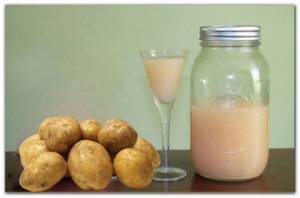
One of the best fighters against edema is potato juice. The root vegetable needs to be chopped and squeezed. Moisten a napkin or cotton pad with the resulting juice, apply to the swelling, wrap, hold for 20 minutes, then rinse your feet.
You can make medicinal rubs from Kalanchoe. The crushed leaves are placed tightly in a jar and filled with vodka (1/2 l). You need to infuse the product for 2 weeks.
Nettle roots are used to prepare the rub. They are filled with sunflower oil, the mixture is brought to a boil over low heat, infused for 10 minutes, and applied to the swelling for 30 minutes.
Herbal baths, simple recipes.
Baths have been used since ancient times as a means of hygiene and as an excellent remedy.
Baths with mineral water, salt baths, turpentine baths, and herbal baths have healing properties.
It’s easy to prepare a herbal bath at home; the recipes are the simplest and most accessible.
Each person can choose herbal bath recipes for himself; the choice depends on what effect he wants to achieve from the bath. For example, baths help calm nerves and improve sleep.
Herbal baths are soothing.
To prepare the decoction, take 200 grams of herb and 2-3 liters of boiling water. Boil for another 5 minutes on low heat. Leave for about 30 minutes. Strain thoroughly and add the herbal decoction to a bath filled with warm water. Read more about the rules for taking baths in the article What herbs to use for a bath.
The soothing bath should have a temperature of 38-39 degrees.
- Soothing baths with valerian . Valerian herb reduces the excitability of the nervous system, normalizes the functioning of the cardiovascular system and gastrointestinal tract, and improves skin condition.
- Soothing baths with motherwort . Motherwort is an excellent sedative. A motherwort bath taken before bed will improve your sleep.
- Soothing baths with oregano . Oregano soothes, reduces pain, improves the functioning of the gastrointestinal tract.
- Soothing lavender baths . Lavender has soothing, antiseptic and antispasmodic properties. Helps with flatulence.
- Soothing baths with mint . Peppermint has a calming, anti-inflammatory and analgesic effect.
- Soothing sage baths . Sage calms nerves and improves sleep. Relieves skin irritation.
- Soothing hop baths. Hops also help calm nerves and improve sleep.
Herbal baths for skin
At home, you can take baths with herbs for the skin. Herbs that relieve inflammation are added to skin baths.
- Bath with a series for the skin. A series of excellent skin care products is used to treat various skin diseases. Due to its exceptional properties, the string is used for bathing newborn babies.
- Chamomile bath for skin . Chamomile has antibacterial and anti-inflammatory properties, relieves skin irritation, and gently soothes the nervous system.
- Calendula bath for skin. Calendula has a similar effect to chamomile, reduces skin irritation, helps relieve redness and rashes.
- Nettle bath for skin . Nettle has an anti-inflammatory and restorative effect, softens the skin, and promotes rapid healing of small wounds.
Herbs - string, chamomile, calendula, nettle are great for inflammation.
Herbal baths for skin elasticity
For skin elasticity, take baths with nettle, peppermint, chamomile, horsetail, lemon balm, and thyme.
Juniper and oak bark contain tannins, which have a very beneficial effect on the skin and relieve inflammation. The skin becomes more elastic.
A bath with rosemary and wormwood perfectly tones the skin .
Take 100 grams of rosemary and wormwood, brew a mixture of herbs in 3 liters of boiling water. Leave for 30 minutes. Strain and add the herbal decoction to a warm bath.
Herbs for baths for weight loss.
- Herbal baths are successfully used for weight loss.
- Usually, a collection of herbs is added to weight loss baths.
- Prepare a bath infusion from 200 grams of herbal tea and 2 liters of boiling water. Let it brew for half an hour, filter and pour into the bath.
- I bring to your attention bath recipes for weight loss.
- Take equal parts of mint, St. John's wort, nettle and rosehip.
- Take equal parts of lavender, chamomile, arnica, linden blossom, blackthorn flowers, yarrow and sage.
- Take equal parts of string, chamomile, thyme and oats.
- Take equal parts of oregano, calendula, mint and sage.
- Take 150 g of thyme and add 20 g of celandine.
Herbal bath mixtures may include various herbs, for example:
Chamomile, lavender, lungwort, horsetail, thyme, sage, oregano, nettle, string.
Herbal baths solve several health problems at once, and the recipes are not at all complicated.
